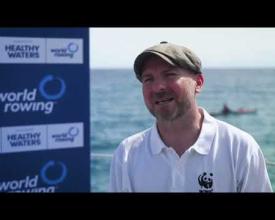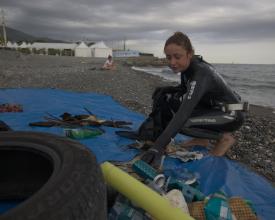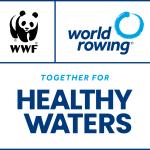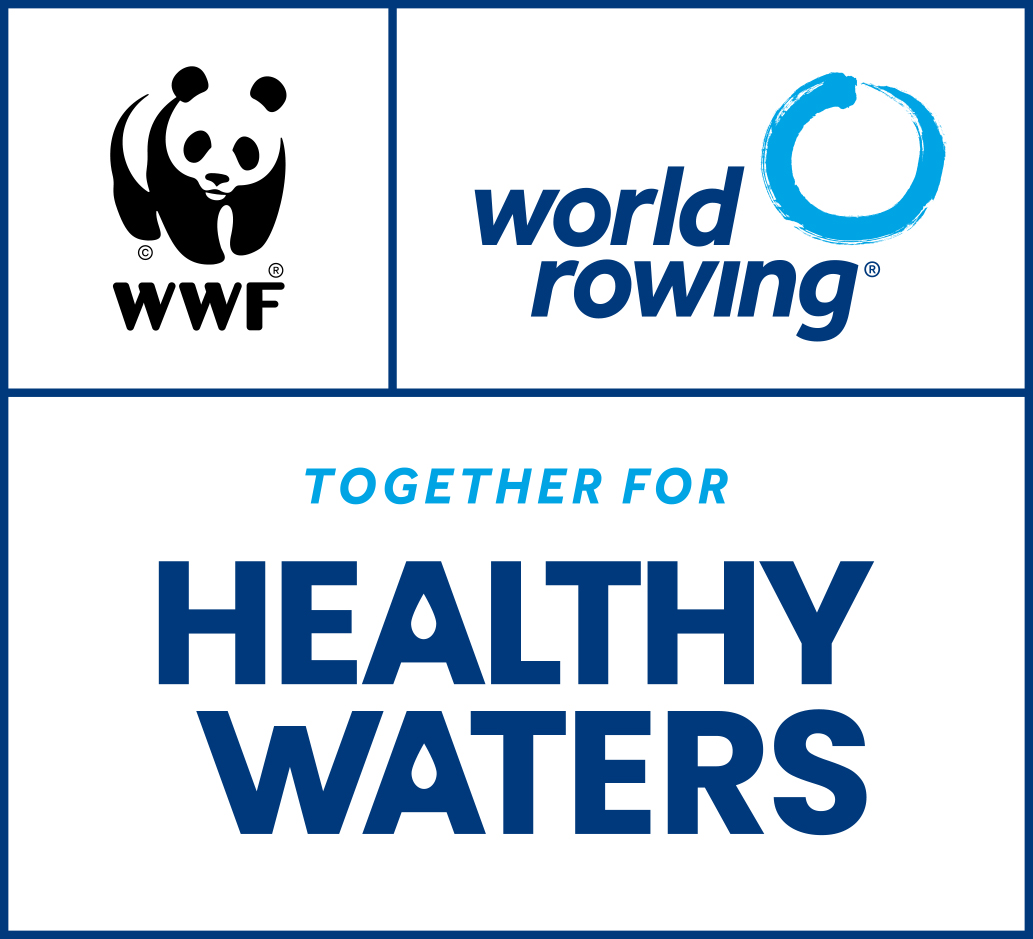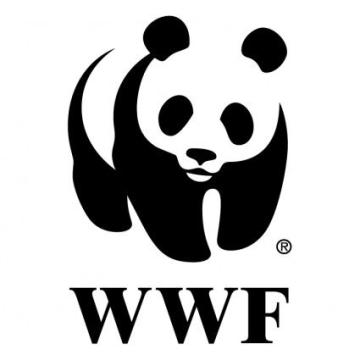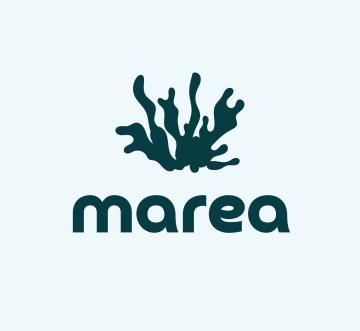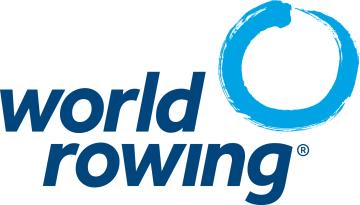
Clean and healthy waters are vital for human health, food security, reversing nature loss, climate resilience, and sustainable development. Yet rivers, lakes, and coasts are under threat, affecting life on Earth and sports like Rowing, which depend on these ecosystems. To take action, World Rowing deepened its partnership with WWF International by launching the Healthy Waters Alliance, shifting from awareness to impact. The Alliance unites World Rowing and WWF communities to co-create and deliver projects that protect and restore waters essential to rowers, wildlife, communities, and economies. Projects can be initiated by National Rowing Federations, clubs, athletes, event organisers, or local WWF offices. The Healthy Waters Alliance Guide outlines the process for collaboration. In 2024, the Italian Rowing Federation and WWF Italy launched a seabed clean-up with a local NGO, and clubs joined Adopt a Beach, tackling plastic pollution. In 2025, Ambassador Martin Helseth led a clean-up of the Oslo fjord with clubs, NGOs & WWF.
Context
Challenges addressed
The Healthy Waters Alliance was created in response to both structural and environmental challenges facing freshwater and coastal ecosystems. The Alliance was set up to tackle the lack of cross-sector collaboration between the conservation and sports communities, despite their shared reliance on healthy aquatic environments. There was also limited awareness among rowers of their potential to contribute to environmental protection, resulting in few concrete actions being taken at local level. On the environmental side, freshwater & coastal ecosystems are increasingly degraded due to pollution, habitat loss, and unsustainable land use. These issues are exacerbated by a general lack of engagement in practical restoration or pollution-reduction activities. The Alliance addresses these challenges by building bridges between sport and conservation, empowering athletes, National Rowing Federations and event organisers to take action, and supporting initiatives that directly improve water quality, biodiversity and ecosystem health.
Location
Process
Summary of the process
A shared commitment from World Rowing and WWF to protecting and restoring freshwater & coastal ecosystems formed the foundation of the collaboration, strengthened by a mutual recognition of worsening ecosystems degradation are central to water and food security, tackling the climate crisis, reversing nature loss, and driving sustainable development.
This led to transitioning from raising awareness to driving tangible action at local level, while ensuring impactful solutions guided by WWF's expertise.
The dedicated Healthy Waters Alliance platform connects rowing and conservation communities, fostering collaboration to co-create and deliver joint initiatives for healthy waters. Visibility through National Rowing Federations and major World Rowing events amplifies active engagement.
By using their influence and enhancing outreach, World Rowing Healthy Waters Alliance Athlete Ambassadors raise awareness and inspire broader involvement, contributing to the Alliance’s objectives.
Building Blocks
Reinforcing the World Rowing – WWF International partnership to evolve from awareness-raising to action
In 2011, World Rowing formed a strategic alliance with WWF International, recognising a shared objective: protecting and restoring freshwater and coastal ecosystems. This objective was part of WWF's mission and aligned with World Rowing's strategic objectives. Both organisations understood that rivers, lakes, and coastal areas are increasingly at risk around the world. Knowing that healthy waters are essential not only for life on Earth but also for the sport of rowing, they chose to strengthen their partnership. Their ambition went beyond raising awareness; they aimed to drive tangible, on-the-ground action. This led to the creation of the Healthy Waters Alliance in late 2024. This alliance is dedicated to placing healthy waters at the heart of all rowing. It provides a platform to facilitate collaboration between sport and nature conservation, encouraging co-created and jointly delivered projects involving National Rowing Federations, event organisers, rowing clubs, and environmental professionals. "It is a unique opportunity to bring the rowing and conservation communities together around a common goal (...)." Stuart Orr, Global Freshwater Lead, WWF International.
Enabling factors
- A cross-sectoral collaboration with a shared core mission: protecting and restoring freshwater & coastal ecosystems
- Recognition by both organisations of the worsening degradation of water ecosystems and the need to move beyond awareness-raising
- Healthy rivers, lakes, wetlands and coastal ecosystems are essential for people, nature and climate.
- These ecosystems - and the health of their waters - are critical for water and food security, reversing nature loss, tackling climate change, and driving sustainable development.
- Of course, they are also critical for rowing (as well as other sports)
- Due to unsustainable human activities, far too many of these critical ecosystems have been degraded, undermining their overall health and the health of their waters - and the benefits they provide to people, nature and climate
- A strong commitment to driving tangible action, which in turn led to a strengthened partnership
- There is an urgent need to accelerate efforts to protect, restore and sustainably manage these ecosystems to underpin resilient societies and economies, and pave the way for a net-zero, nature-positive, resilient and sustainable future
Lesson learned
Lessons learned:
- The value of a clear, shared vision between partners from different sectors. World Rowing and WWF International, both share a clear vision around the common goal of protecting and restoring freshwater and coastal ecosystems. This shared purpose serves as a powerful anchor during planning, communication, and decision-making processes.
- The importance of moving beyond symbolic partnerships. While the awareness campaign was useful it was not sufficient enough to address environmental challenges. By committing to co-create and deliver tangible, on-the-ground projects through the Healthy Waters Alliance, the partnership was able to evolve into a results-oriented platform. This required a shift in mindset, internal structures, and resource allocation on both sides.
- The need to create space for diverse actors to contribute, including National Rowing Federations, local clubs, event organisers, and environmental experts. Many of these stakeholders had never previously collaborated, so developing mechanisms for joint planning was essential considering the operational complexity and diversity of sport and conservation organisations.
Challenges:
- Resource constraints
- Partnerships between organisations with different core missions—such as sport and conservation—require stronger coordination in communication and outreach to ensure projects receive the visibility and impact they deserve. Equal commitment from both sides in promoting results and raising awareness has proven essential for success.
Recommendations:
- Investing early in relationship-building, including shared workshops, regular meetings and occasional event & project visits, to align expectations.
- Providing flexible funding mechanisms that can support both established and grassroots project partners, enabling wider participation (e.g. making use of consultants to fundraise)
- Establishing joint communication strategies to ensure balanced promotion of the partnership and its outcomes.
- Allowing enough lead time for planning and creating dedicated project coordination roles to help navigate organisational complexity and maintain momentum for projects
Resources
Connecting WWF local offices and National Rowing Federations and clubs worldwide to collaborate on impactful actions & projects
The Healthy Waters Alliance connects the Rowing community with WWF communities worldwide to foster collaboration. Together, they co-create and jointly deliver local projects and initatives that protect and restore healthy waters through awareness and hands-on action, benefiting rowing, communities, and ecosystems. Working with WWF ensures that actions implemented by rowing communities are relevant from a nature conservation perspective.
Projects can be initiated by National Rowing Federations, clubs, athletes, event organisers, or WWF local offices. After contacting the Healthy Waters Alliance, through submitting their interest via an online form partners agree on a locally impactful project recognized by the Alliance. These projects focus on community engagement, nature restoration, waste reduction and other areas.
The rowing community benefits from the platform through access to educational workshops, working groups, global visibility of local projects, and healthier waters for rowing. In turn, WWF offices gain partners who help raise awareness on the freshwater & coastal ecosystems' crisis and promote solutions, while engaging with event organisers to drive visibility at major rowing events with wide media coverage.
Enabling factors
- A platform connecting the rowing and nature conservation communities locally to facilitate collaboration
- The possibility for various rowing stakeholders to initiate projects
- WWF's expertise ensuring projects deliver a positive impact on nature
- Communications and visibility platform provided by rowing events and organisations to nature conservation causes through concrete initiatives on the ground
- A fundraising model established by the partnership and run by external consultants. To look for targeted funding opportunities and partners that would like to support the Alliance as a whole or individual projects of interest.
Lesson learned
- Clear communication channels accelerate coordination
Establishing an accessible online form and Alliance framework streamlined the project initiation process and helped all partners to quickly align on impactful actions. - Local context drives engagement
Projects that resonate with local communities and ecosystems gain stronger support and lead to more sustainable outcomes. - Cross-sector collaboration requires mutual understanding
Time invested in learning each other’s priorities: WWF’s conservation goals and rowing’s operational realities. - Visible impact builds momentum
Highlighting early success stories and media coverage from major events helped raise interest from other National Rowing Federations and WWF offices, expanding the initiative’s reach. - Education is a powerful enabler
Workshops and knowledge exchange sessions empowered rowing stakeholders (event organisers) to take more informed and effective action on water health and conservation. - Flexibility supports innovation
Allowing diverse stakeholders (clubs, athletes, event organisers, etc.) to propose projects encouraged creative, locally tailored solutions.
Resources
Athlete ambassadors as key players to the success of the Healthy Waters Alliance’s objectives
Top-level athletes have an important communications platform at their disposal and can lead by example, making them key contributors to the Healthy Waters Alliance’s goals. By using this awareness-raising potential, they can help bring attention to the degradation of freshwater and coastal ecosystems, increase visibility of practical solutions, and drive greater public engagement and action.
Appointing athlete ambassadors dedicated to the cause strengthens the movement. With the launch of the Healthy Waters Alliance, World Rowing have engaged Christine Cavallo (USA) and Martin Helseth (NOR) as the first World Rowing Healthy Waters Ambassadors, and are now looking to expand this into a global Athlete Ambassador Programme with representatives from each continent.
Athletes inspire action more effectively than generic messages, making initiatives more relatable and engaging. For example, Norwegian Olympian Martin Helseth led a powerful environmental initiative through the World Rowing – WWF Healthy Waters Alliance to inspire action across Norway’s rowing community. The project demonstrated how athletes can effectively engage the public and protect nature by addressing water pollution in the Oslo Fjord. The initiative includes two key phases:
- Phase 1: Clean-Up Week (3–8 June 2025) – Timed with World Ocean Day, rowing clubs in Oslo conducted seabed dives, shoreline clean-ups, and environmental education to tackle local pollution.
- Phase 2: Oslo Fjord Restoration Day (23 August 2025) – This phase will focus on habitat restoration and youth involvement, supported by the local NGO Marea.
Helseth’s leadership exemplifies how athlete ambassadors can lead grassroots environmental efforts with global impact, aiming to foster a new generation of nature protectors in rowing and beyond.
Enabling factors
- Identifying and selecting high-level athletes who are committed to and passionate about the cause as ambassadors
- Providing an Alliance guidance framework, exchange opportunities and project management support to the athlete ambassadors
- Creating visible and action-oriented opportunities for athlete's ambassadors, for the delivery of athlete led projects and to project their voices
Lesson learned
Lessons learned:
- Authenticity is key to influence
One of the most important lessons is that athlete ambassadors must be genuinely passionate about and involved with environmental issues. Authenticity drives credibility. When athletes speak and act from personal conviction, as have Christine Cavallo and Martin Helseth their impact is significantly greater. - Support and structure to succeed
Active athletes have busy schedules, often centered around training and competition, without proper logistical support and good communication even highly motivated ambassadors may struggle to sustain momentum. Providing clear guidance, toolkits, media support will help them translate their ideas into action. - Visibility and storytelling amplify impact
Sharing the journeys and projects led by athlete ambassadors through videos, interviews, and social media is critical. These stories humanise environmental action and make initiatives relatable. For example, showcasing Martin Helseth’s leadership in cleaning up the Oslo Fjord not only inspired local rowing communities but also generated national media interest and highlighted practical, replicable environmental actions that the global rowing community can take. Structured programming ensures strategic growth & equal opportunities
Transitioning from ad hoc ambassador appointments to a structured global Athlete Ambassador Programme with representation from each continent is a necessary step. It ensures balanced representation and allows for better integration into the broader Healthy Waters Alliance strategy.
- Athlete-led initiatives benefit from local partnerships.
Successful campaigns, like the Oslo Fjord Clean-up & Restoration initiative, have demonstrated that athlete leadership is most effective when paired with local NGOs, clubs, and institutions. These partnerships provide operational capacity, local knowledge, and continuity.
Challenges:
- Time constraints and competing priorities for active athletes, especially around major competitions.
- Geographic imbalance, with early initiatives being concentrated in a few countries, highlighting the need for broader athlete ambassador recruitment and representation.
Recommendations:
- Provide a clear ambassador onboarding process, including expectations, support available, and example ideas and activities.
- Offer flexible engagement formats (e.g., single-event involvement, or year-long ambassador roles) to accommodate diverse schedules.
Impacts
Since its launch, the Healthy Waters Alliance has made measurable progress in bringing the sport and conservation sectors together. Early impacts include increased cooperation between national rowing federations, event organisers, and local WWF offices. Joint initiatives have already been implemented. Beach and seabed clean-up projects in Italy and Norway have been implemented over the last few months, removing 650kg & 10 bags of plastic waste from the Oslo fjord with the help of five rowing clubs and 60 volunteers over a week of activities.
The Alliance has also begun laying the foundation for a global Athlete Ambassador Programme, with two ambassadors already appointed, Christine Cavallo (USA) and Martin Helseth (Norway). Their involvement has helped raise the Alliance’s visibility and encouraged greater athlete participation in water-focused initiatives. In June 2025, Martin Helseth led a seabed and shoreline clean-up in Oslo, further engaging the rowing community and the public in hands-on conservation.
Through awareness campaigns, social media outreach, and by integrating freshwater restoration messages into rowing events, the Alliance is helping shift mindsets within the sport. While some outcomes, such as improved water quality or biodiversity recovery, require longer-term tracking, these early actions are setting the stage for wider, sustained impact.
Beneficiaries
- National Rowing Federations (including athletes and clubs)
- Rowing Event Organising Committees
- WWF local offices
- Local communities (including schools & universities)
- Local conservation and environmental NGOs


